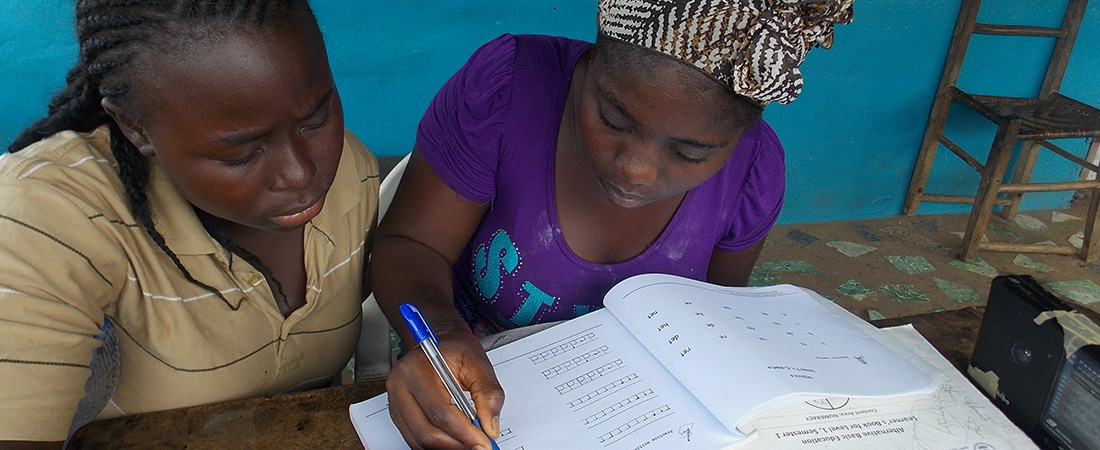How to Build Education Programs in Crisis Zones

A 2016 UNICEF study estimated that 250 million young people live in conflict zones around the world. These are places where there is ongoing armed conflict between rival groups (Syria, for example), or where there has been active conflict within the past 10 years (such as Iraq). Hundreds of millions more live in crisis areas—such as Haiti—where chronic political instability and multiple humanitarian crises have stunted the educational opportunities available to young people.
Through the USAID Education in Crisis and Conflict Network (ECCN), EDC’s Cornelia Janke and Susan Ross support the improvement of educational opportunities in many conflict- and crisis-affected countries. Here, they offer five ideas for building successful education programs.
1. Understand the context
Janke recommends that policymakers and program designers spend adequate time studying the country context—as well as the role that education plays within it—before initiating any education program. This is particularly important in a crisis or conflict environment.
“Where state legitimacy is weak, where social services have broken down, and where trust between people and government is challenged, education is not neutral,” says Janke. “Education is affected by the context in which it takes place, and it can also can influence important local dynamics—for good or ill. Policymakers need to consider this fact.”
One resource for assessing a country context? The Rapid Education and Risk Analysis tool, developed by ECCN.
2. Aim for high-quality programs
Students in conflict and crisis zones often face tremendous barriers to education, from few resources to poorly qualified teachers. Those barriers should not be used as excuses for delivering a lesser education, says Ross.
“Having safe places for kids to learn is important,” she says. “But schools have to be more than that, too. In conflict zones, they should also be places of high-quality instruction where students learn to read, to write, and to learn.”
To do this, Ross recommends investing in teacher-training efforts and the development and delivery of high-quality learning materials, while also building community support for education.
These changes take time. And finding both the financial resources and political stability to support strong schools can be a challenge. But the payoff can be huge: a high-quality education is one of the most basic tools for promoting peace and economic growth.
3. Be flexible
Major disruptions, such as population shifts, political unrest, and health crises, can require quick revision and adaptation of plans. Flexibility is the key to successful education programs, says Janke.
“Contexts change rapidly and in complex ways,” she says. “You have to adapt to the realities as they are, not as you expected them to be. The highest quality program on paper is worthless if you can’t implement it, so using adaptive management principles in your design and implementation is key.”
For example, when Ebola broke out in Liberia in 2013, schools across the country closed. USAID’s Advancing Youth Program (AYP), an alternative basic education program implemented by EDC, began broadcasting AYP programming over the radio, which allowed it to continue to reach thousands of learners. When the health crisis abated, radio delivery was no longer necessary, and the program resumed its face-to-face classes.
4. Get accurate data
In conflict- and crisis-affected states, there is often incomplete data about how many children attend school, who is teaching them, or even how many schools exist.
But accurate information—whether from the government or other development organizations—can enable projects to deliver programs that better meet the needs of local students. This data also serves to provide transparency about program activities, helping to curtail corruption.
“At a basic level, knowing how many kids you have in school determines how many teachers you need and how many books you order,” she says. “It is really the baseline data you need to figure out the rest of the system.”
Ross would also like to see more information gathered about the effectiveness of these programs, data that could be used to help millions of other learners around the world.
“High-quality interventions lead to high-quality learning opportunities, which supports the rebuilding of communities,” she says. “We need to continue to build the evidence base about what works.”
5. Accept that there are no easy answers
Simply building more schools is seldom enough to address the root causes of a country’s educational crisis. Successful interventions need to be able to address factors well beyond just education.
As an example, Janke points to El Salvador, where conflict among gangs—as well as between gangs and the government—has caused educational access to deteriorate.
“If you are a student from a neighborhood that is under the control of one gang, but you are supposed to attend a school that is in an area controlled by another gang, you simply cannot get to school,” she says. “So what do you do?”
Janke adds that there are no easy solutions in conflict and crisis zones. The best way forward is to create interventions that broaden access to education or promote opportunity—think delivering education over the radio, offering opportunities to over-age learners, or developing curricula and teaching methods that address the social and emotional needs of students. These programs may not solve all of a country’s educational challenges, but they can become part of a longer-term, comprehensive solution.